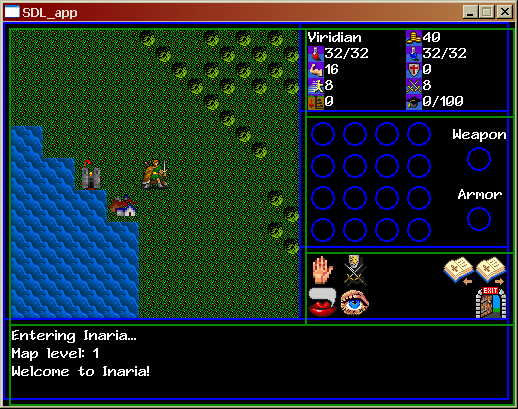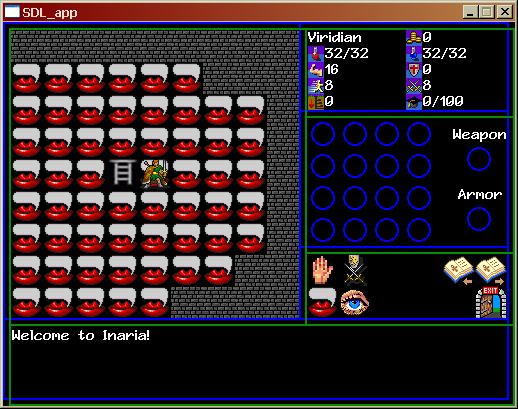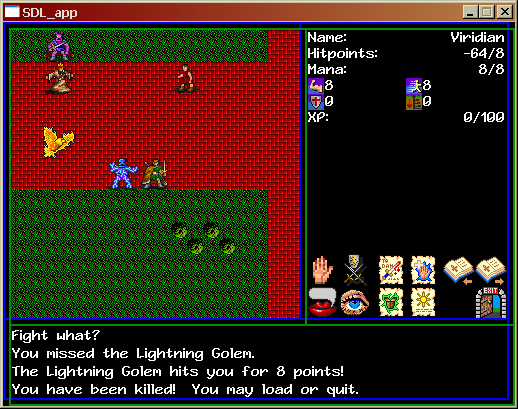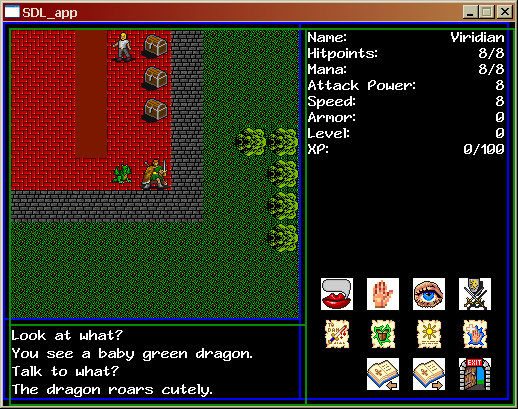Starflight has long been one of my favorite games, although its interface is very annoying…sometimes I wonder how I put up with stuff like that when I was younger (answer: I didn’t have another space opera RPG to compare it to, of course).
I’ve been playing Starflight 1 and 2 again as reference for Star Revolution. I was playing Starflight 2 when I noticed something odd…look at this screenshot. Doesn’t it look weird in some way?

And doesn’t this screenshot of Starflight 1 look kind of…chunky? Even for a 320×200 game?
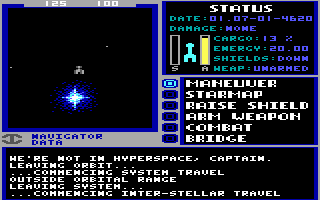
In fact…
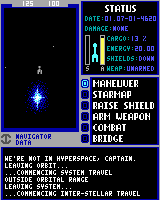
This is a screenshot for the original Starflight reduced to 160×200. Notice that all of the text is still readable and all the graphics look the same, just narrower. It’s almost as if the game were written to run in 160×200…which is exactly what it was. Starflight was written to run in a 160x200x16 color mode available on some CGA/composite monitor combinations (most notably Tandy and Compaq computers). When the EGA and VGA versions were created, the image was simply doubled horizontally.
Which brings us back to the Starflight 2 screenshot.

Notice how much more detailed the picture of the Tandelou Eshvey looks than the rest of the interface! The developers of Starflight 2 did not bother to try to make the interface look any better, even though Starflight 2 was written specifically for VGA! The only thing they did was use the additional horizontal resolution to make the font a bit clearer. How disappointing!

